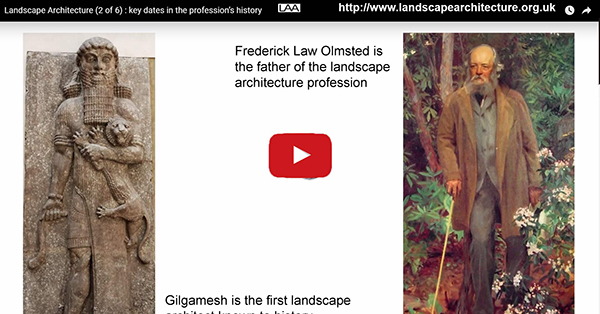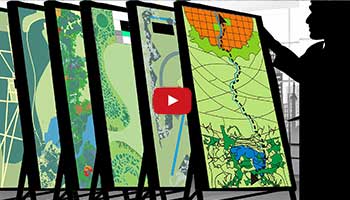Was Frederick Law Olmsted or Gilgamesh the father of landscape architecture?

A Google.com search on Olmsted “father of landscape architecture” produces 153,000 returns. But, of course, he was not the father of landscape architecture. As Norman T Newton wrote (Design on the Land, 1971 p. xxi) ‘Landscape architecture: a profession only a little over a century old; an art as old as human existence’. Recognising this point enhances Olmsted’s historical importance as the father of the landscape architecture profession.Newton does not say whether by ‘human’ he means Homo sapiens sapiens (evolved 50,000 years ago) or Homo sapiens (evolved 200,000 years ago). But why stop there? Avian dinosaurs, the Jurassic ancestors of birds, are believed to have laid their eggs in nests. So they must have chosen sites and built structures – an activity that could well be classified as landscape architecture. An argument against this is that we restrict use of the word ‘father’ to a genus and to a named individual.

As things stand, and as discussed in the eBook, below, ‘history begins at Sumer’ and, in the Epic of Gilgamesh, we have a written record of a king who describes his work on the city of Uruk in terms not unlike those a modern landscape architect would use. My view is that ‘Landscape architecture is an ancient art and must be older than architecture, because you have to choose a site before you can build a structure. Our distant ancestors understood places and integrated their settlements with local environments.’ (Chapter 8, LANDSCAPE ARCHITECTURE: What, Why, When, How, Where, Who and What Next? Kindle Edition ebook 2017 by Tom Turner)

Landscape Architecture Kindle eBook designed for use on mobile devices, free 10-14th September midnight-to-midnight Pacific Standard Time.
